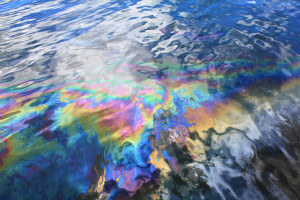

How to Prevent Spills and Reduce Emissions (While Eliminating Potential Fines)
Oil spills and emissions come standard with costly fines that most yacht owners aren’t too pleased to pay. And truth be told, you shouldn’t have to, especially since there are simple precautions and preventative equipment you can purchase to ensure you won’t have to contend with these headaches.
In this article, we’re going to discuss everything from bilge maintenance to the disposal of oil absorbent materials, emissions control, preventative equipment, and what you can do in case of a spill. This will give you all the information you need to guarantee you never make another costly misstep again (if ever, for that matter). Let’s get started!
Over time, engine oil will accumulate in your bilge and be discharged overboard with bilge water (which is illegal). Here are a few tips to avoid steep fines and preserve water quality:
How you dispose of oil absorbent materials will depend on the type of product you’ve used and how you used it:
Marine engines, especially 2-stroke outboard motors, produce the highest average level of hydrocarbon exhaust emissions (falling short of that produced by lawn and garden equipment). These particular emissions contribute to ground level ozone, creating a well-known health risk.
The following tips will help keep your engine operations as efficient as possible:
Without wax, the sun’s UV rays can quickly ruin the topsides of your boat. But with a layer of wax, you can increase durability, protect the gelcoat (if you own a fiberglass boat), and prevent oxidation that commonly robs your boat of its glossy, “brand new” appearance.
There’s a wide variety of commercial equipment you can purchase to prevent spills while reducing emissions. Some of our best recommendations include:
If you ever have an oil or fuel spill, there are 3 basic steps you must take:
Gas or diesel is commonly spilled during fueling, which can harm aquatic life, waste money, and cause stains on the hull and damage to the coat and striping. To avoid potential problems, follow these tips:
At Oceanic Yacht Management, We Worry About You’re Regular Maintenance So You Never Have to
Managing everything from oil changes to disposing of oil absorbent materials and figuring out which preventative equipment is best takes time and energy. And when you contact Oceanic Yacht Management for your needs, you can have peace of mind that the time or energy spent is not your own, it’s ours.
We’ve refined our boating and maintenance services for over 35 years to meet the discerning expectations of yacht owners like you. If you’re interested in having your own go-to Yacht-ciergeTM service or are simply looking for a go-to professional, trustworthy service, you can count on our carefully trained team to deliver.
Contact us today at 561-406-4608 to discuss how we can meet your unique needs. We look forward to speaking with you and customizing a care plan for your lifestyle and yacht!
